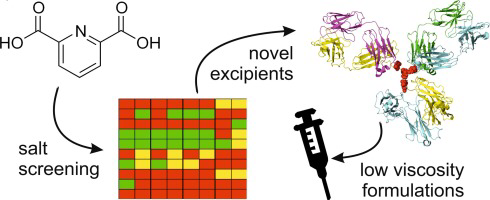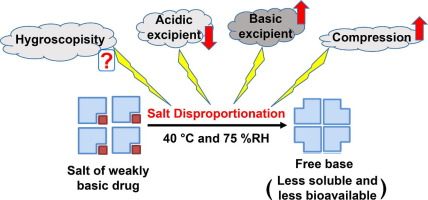- Home
- Blog
- News
- Basics
- Sources
- Agencies, Regulatory & Organisations
- CERSI Excipients Browser
- Excipient Report
- Excipient DMF List
- EXCiPACT Certified Companies
- Excipient Documentation
- Excipient EINECS Numbers
- Excipient E-Numbers
- FDA Inactive Ingredient List
- FDA GRAS Substances (SCOGS) Database
- IPEC Americas
- USP - U.S. Pharmacopeia
- Definitions
- Whitepapers / Publications
- Supplier
- Services
- Media
- Events
- 1st pharmaexcipients Poster Award
- Event Calendar
- Events featured by pharma-excipients
- 4th Annual Formulation & Drug Delivery Congress
- DDF Summit
- ExcipientFest Americas
- ExcipientFest Asia
- Global CompliancePanel
- International Conference and Exhibition on Pharmaceutics & Novel Drug Delivery Systems
- Formulation & Drug Delivery USA Congress
- Laboratory Medicine 2018
- Making Pharmaceuticals Europe
- Making Pharmaceuticals Exhibition
- Pharma Integrates
- PharmaExcipients China @CPhI China
- TTC Technology Training Center
- Jobs
- Online Sourcing
- Contact
25. July 2018
Concentrated monoclonal antibody (mAb) solutions can lead to high viscosity as a result of protein-protein interactions and pose challenges for manufacture. Dipicolinic acid (DPA, pyridine-2,6-dicarboxylic acid) is a potential excipient for reduction of protein solution viscosity and here we describe new DPA salts with improved aqueous solubility. Crystallinity and solubility screens identified ethanolamine and diethanolamine as two promising counterions which generated crystalline, high...
21. May 2018
Excipients are crucial components of most pharmaceutical formulations. In the case of a solid oral dosage formulation containing the salt form of a weakly ionizable drug, excipient selection is critical, as some excipients are known to cause salt disproportionation (conversion of salt to the free form). Therefore, robust formulation design necessitates an in-depth understanding of the factors impacting salt disproportionation during processing or storage as this can negatively impact product...
11. May 2018
The purpose of this study was to investigate if AZD5329, a dual neurokinin NK1/2 receptor antagonist, is a suitable candidate for further development as an oral immediate release (IR) solid dosage form as a final product. The neutral form of AZD5329 has only been isolated as amorphous material. In order to search for a solid material with improved physical and chemical stability and more suitable solid-state properties, a salt screen was performed. Crystalline material of a maleic acid salt and...
03. October 2017
We report the first multicomponent crystal of desloratadine, an important anti-histamine drug, with a pharmaceutically acceptable coformer of benzoic acid. The single crystal structure analysis revealed that this novel multicomponent crystal is categorized as salt due to the proton transfer from benzoic acid to the desloratadine molecule.
03. September 2017
Abstract Salt formation has been intensively used to improve drug properties, including solubility, stability and mechanical properties. A sweet salt of metformin with acesulfame, prepared though an anion exchange reaction, showed superior properties over the commercial hydrochloride salt. These included both remarkable improvement of taste and significant enhancement in tabletability, which is explained by the different crystal structures and lower hardness as measured by nanoindentation. The...
07. April 2017
Abstract A compound, which is a selective peroxisome proliferator activated receptor (PPAR) agonist, was investigated. The aim of the presented studies was to evaluate the potential of the further development of the compound. Fundamental physicochemical properties and stability of the compound were characterized in solution by liquid chromatography and NMR and in solid-state by various techniques. The drug itself is a poorly soluble lipophilic acid with tendency to form aggregates in solution....
14. March 2017
Abstract Using pharmaceutical salts in solid dosage forms can raise stability concerns, especially salt dissociation which can adversely affect the product performance. Therefore, a thorough understanding of the salt instability encountered in solid state formulations is imperative to ensure the product quality. The present article uses the fundamental theory of acid base, ionic equilibrium, relationship of pH and solubility as a starting point to illustrate and interpret the salt formation and...
20. December 2016
Abstract Salt disproportionation (a conversion from the ionized to the neutral state) in solid formulations is a potential concern during manufacturing or storage of products containing a salt of the active pharmaceutical ingredient (API) due to the negative ramifications on product performance. However, it is challenging to find an effective approach to prevent or mitigate this undesirable reaction in formulations. Hence, the overall objective of this study is to explore novel formulation...
22. November 2016
Abstract Gastrointestinal drug administration is the preferred route for the majority of drugs however, the natural physiology and physicochemistry of the gastrointestinal tract is critical to absorption but complex and influenced by factors such as diet or disease. The pharmaceutical sciences drive for product consistency has led to the development of in vitro product performance tests whose utility and interpretation is hindered by the complexity, variability and a lack of understanding. This...
24. October 2016
Abstract The objective of this study was to evaluate the feasibility of lauryl sulfate (LS) salt/complex as a novel carrier in oral sustained-release suspensions. Mirabegron, which has a pH-dependent solubility, was selected as the model drug. Sodium lauryl sulfate (SLS) was bound to mirabegron in a stoichiometric manner to form a LS salt/complex. LS salt/complex formulation significantly reduced the solubility of mirabegron and helped mirabegron achieve sustained-release over a wide range of...





